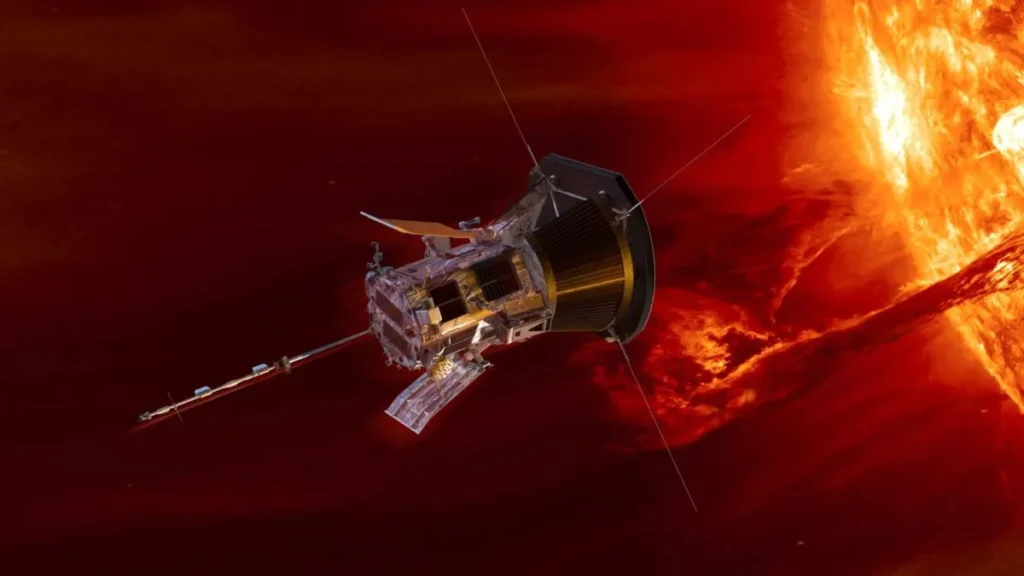Here Comes The Sun

On Friday a spacecraft dived towards the Sun. It reached perihelion the closes point to the sun on 24th December when it was a mere six million km from the sun. It survived. This is the Parker Solar Probe specifically designed to probe the outermost layers of the Sun. It dived into what is known as the solar corona, the outermost atmosphere of the Sun. There the temperatures can reach phenomenal levels. So how did it survive?
The Parker Solar Probe is a spacecraft and like many other spacecraft has to be built to withstand the extreme conditions it will meet. The Juno spacecraft has to hide its sensitive electronics inside a titanium vault to protect against Jupiter’s radiation. The voyager spacecraft were fitted with heaters to prevent it freezing in the -250°C temperatures it encounters. Parker needs similar protection. Except that Parker is diving toward the Sun. It’s temperature could reach up to 1200°C. Or rather it could if is sat sunbathing for weeks on end at those distances.
So it doesn’t it follows a long sweeping elliptical path that dives to within 6 million km of the Sun and pulls all the way out to the orbit of Venus. It spends relatively little time that close to the Sun.
It hides behind a sunshade as it flies. That stubby end of the spacecraft is a high tech 10cm thick, two and half metre wide heat shield. The front of that will reach 1400°C while the back is a relatively cool 320°C. The Parket solar probe is just trying to spend less time in the Sun. That gives it a chance to dive into the corona, the sun’s outer atmosphere, where the temperature can reach a million degrees.
A million degrees? I thought you said 1400°? Temperature is not always a useful way to measure something. Water in a kettle reaches 100 centigrade and putting your hand in it is a bad idea. The steam above a kettle is 100 centigrade but you can pass your hand through it. The steam is so tenuous that although it is at a high temperature there isn’t much energy overall. Parker is a one tonne spacecraft. The same space filled with the Sun’s corona would be a fraction of a trillionth of a gramme. It can pass through that more easily than you could pass your hand through steam. What it can’t avoid is the sunlight and it is that which heats it to such extremes.
Way out by the Earth we are 150 million km from the sun. Sunlight dominates here. We still have variations; we also change our distance from the sun. We are closest to the sun not in summer as you might expect, but in winter on the 8th January. If that was the only factor then we would be 5 degrees warmer in January than in July. But it is dwarfed by other effects; the tile of the Earth, heat trapped in the Earth’s oceans and atmosphere but above all by shorter days.
So … happy perihelion. Enjoy your sunbathing and try not to freeze to death.

